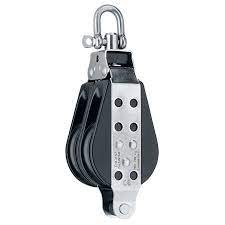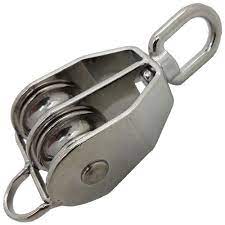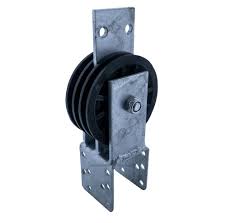Product Description
Product Description
Aluminium Sliding Door Rollers Window Accessories Double Roller bearing
China High Performance Sliding Door Nylon Pulley Wheel Manufacturers: Material Option:
1.Bearing Material:carbon steel,chrome,stainless steel,iron,copper,ect.
2.Roller Material:POM,nylon,glass fiber,etc
3.Sealing from:2RS ZZ ,Z ,RS,OPEN (metal or nylon)
4.Colour: natural color, green, orange, blue, grey, milky white, porcelain white etc.
Our Product: 1.OEM and non-standard bearing&roller orders are available . 2.Provide high quality bearing and roller according to customers’s requirement. 3.Popular in world,good quality,low noise,on time delivery.
Application:
This kind of roller is suitable for wardrobes,big cabins,sliding doors and windows,etc.
Product Feature:
1.Low coefficient of product,reduce tire damage
2.Running smoothly and durable.
3.Poduct size accurate
4.Bearing the adoption of advanced technology production
Company Profile
ZheJiang CHINAMFG Bearing Co., Ltd. is affiliated to ZheJiang Kaidi Bearing Group – a specialized manufacturer of kinds of bearings for about 20 years.
Our company is specialized in producing Deep Groove Ball Bearings, Tapered Roller Bearings, Spherical Roller Bearings and Special Bearings in accordance with Customers’ designs.Our bearings has been widely applied into agricultural equipments, home appliances, power equipments, machine tools, automotives and engineering machinery, etc.
Our Products
ZheJiang CHINAMFG Bearing Co., Ltd. is a specialized manufacturer of ball bearings for about 20 years. Our main products include:
1, Miniature Bearings: like 608, 609, 625, 626, 693, 695, etc;
2, Deep Groove Ball Bearings: like 6000, 6200, 6300, 6800, 6900, 16000 Series;
3,Non-Standard Bearings: U grooved bearings, V grooved bearings, double grooved bearings, bearing rollers with or without plastic injection. 4,Pillow Block Bearing: UCP/ UCF/ UCFL;
5,Tapered Roller Bearings
6,Linear Motion Bearings
Processing Process
we have manufacture bearing more than 20 years, and can produce different style of bearings. Our factory starts production from raw materials. We have a 20-person R&D team and launch a new product every 5 days. We have more than 600 people to produce bearing team, we produce products, the price is the most competitive in China.
Packaging & Shipping
Our Activities
FAQ
|
1.Q:Do you know the Detail Size for the Bearing ? 2.Q: This Size of Bearing is common parts? 3.Q:Are you a factory or a Trade Company for Bearing ? 4.Q:How many the MOQ of the Bearing? 5.Q:Could you supply free sample of bearing for our test? 6.Q:Could you accept OEM and customize? 7.Q:Do you have stocks? |
Contact Us
Jane
ZheJiang CHINAMFG Bearing Co., Ltd.
/* March 10, 2571 17:59:20 */!function(){function s(e,r){var a,o={};try{e&&e.split(“,”).forEach(function(e,t){e&&(a=e.match(/(.*?):(.*)$/))&&1
| Contact Angle: | 15° |
|---|---|
| Aligning: | Non-Aligning Bearing |
| Separated: | Unseparated |
| Rows Number: | Single |
| Load Direction: | Thrust Bearing |
| Material: | Bearing Steel |
| Samples: |
US$ 0.05/Set
1 Set(Min.Order) | |
|---|
| Customization: |
Available
| Customized Request |
|---|
Are there different types of double pulleys, and how do they vary in applications?
Yes, there are different types of double pulleys that vary in design, construction, and functionality, each with specific applications. Here is a detailed explanation of the various types of double pulleys and how they vary in their applications:
1. Fixed Double Pulleys:
– Fixed double pulleys, also known as static double pulleys, have both pulleys on a common axle or shaft, fixed in position relative to each other. These pulleys do not rotate independently of each other. Fixed double pulleys are commonly used in simple lifting or pulling applications where the direction of force remains constant. They provide mechanical advantage by dividing the load between the two pulleys and allow for efficient load movement in a single direction. Fixed double pulleys are commonly used in basic rigging setups, general lifting tasks, and simple mechanical systems.
2. Swivel Double Pulleys:
– Swivel double pulleys, also called rotating double pulleys, have pulleys that can rotate independently of each other. They are designed with a swivel mechanism that allows the pulleys to rotate around a central axis. Swivel double pulleys offer increased versatility and flexibility in rigging applications. The independent rotation of the pulleys enables rescuers or riggers to change the direction of the applied force, adjust the angle of the load, and manage complex rope configurations. Swivel double pulleys are commonly used in rescue operations, industrial rigging, rock climbing, and other applications requiring dynamic movement and directional control.
3. Tandem Double Pulleys:
– Tandem double pulleys, also known as stacked double pulleys, consist of two pulleys arranged in a tandem configuration, stacked vertically one above the other. The tandem design allows for increased mechanical advantage by creating multiple stages of pulley systems. Tandem double pulleys offer greater lifting power and are commonly used in heavy-duty rigging and lifting operations. They are ideal for scenarios where extremely heavy loads need to be lifted or pulled with reduced effort. Tandem double pulleys find applications in construction, industrial settings, and specialized lifting operations.
4. Prusik Minding Double Pulleys:
– Prusik minding double pulleys are designed with special features to accommodate the use of Prusik knots or other friction hitches. These pulleys have additional side plates or flanges that prevent the Prusik knot from jamming against the pulley body. Prusik minding double pulleys are commonly used in rescue operations and climbing systems where self-locking knots like the Prusik knot are utilized for friction-based progress capture. These pulleys allow for efficient ascending and descending while maintaining proper rope management and minimizing wear on the Prusik knot.
5. High-Efficiency Double Pulleys:
– High-efficiency double pulleys are specifically designed to minimize friction and increase overall system efficiency. They feature ball bearings or roller bearings in the pulley sheaves, reducing the friction between the rope and the pulley, thus optimizing power transmission. High-efficiency double pulleys are commonly used in scenarios where maximum mechanical advantage and minimal energy loss are critical. These pulleys find applications in rescue operations, highline systems, and any rigging setup where efficiency is paramount.
6. Compact Double Pulleys:
– Compact double pulleys are designed to be lightweight, compact, and portable without compromising strength and functionality. These pulleys are often made from lightweight materials such as aluminum or composite materials. Compact double pulleys are suitable for applications where weight and size restrictions are important, such as mountaineering, backpacking, or emergency rescue kits. They offer a balance between strength, portability, and versatility.
7. Specialty Double Pulleys:
– Specialty double pulleys encompass a range of pulleys designed for specific applications or unique requirements. These can include pulleys with specialized features like integrated progress capture mechanisms, auxiliary attachment points, or pulleys designed for specific rope diameters. Specialty double pulleys are used in specialized rescue operations, industrial rigging, and other specific scenarios where the pulley’s unique features cater to the specific needs of the operation.
In summary, different types of double pulleys, such as fixed, swivel, tandem, Prusik minding, high-efficiency, compact, and specialty pulleys, offer varying designs and functionalities. They are utilized in a wide range of applications, including general lifting, rigging operations, rescue scenarios, climbing systems, and industrial settings. Understanding the different types of double pulleys allows rescuers, riggers, and climbers to select the appropriate pulley for their specific application, optimizing performance, efficiency, and safety.
What maintenance procedures are necessary to ensure the reliability of double pulleys?
Maintenance procedures are essential for ensuring the reliability and longevity of double pulleys. Proper maintenance helps identify and address any potential issues, prevents premature wear and tear, and ensures safe and efficient operation. Here is a detailed explanation of the maintenance procedures necessary to ensure the reliability of double pulleys:
1. Regular Inspection:
– Regular visual inspections of double pulleys are necessary to detect any signs of damage, wear, or misalignment. Inspect the pulleys for cracks, deformation, or excessive wear on the pulley wheels, axle, and housing. Check for any loose or missing components such as bolts or fasteners. Inspect the ropes or cables for fraying, abrasion, or signs of damage. Regular inspections allow for early identification of potential issues and enable prompt repairs or replacements before they escalate into major problems.
2. Lubrication:
– Proper lubrication is vital for the smooth operation and longevity of double pulleys. Lubricate the pulley axles and bearings according to the manufacturer’s recommendations. Apply a suitable lubricant to reduce friction, prevent corrosion, and ensure smooth rotation of the pulley wheels. Regular lubrication helps maintain the efficiency of the pulley system and minimizes wear on the moving parts.
3. Cleaning:
– Keep the double pulleys clean and free from dirt, dust, or debris. Regularly clean the pulley wheels, axles, and housing using a suitable cleaning agent or solvent. Remove any accumulated dirt or debris that can hinder the pulley’s operation or cause premature wear. Clean ropes or cables to remove dirt or contaminants that could affect their performance or cause damage to the pulleys.
4. Tension Adjustment:
– Check the tension of the ropes or cables in the double pulley system. Ensure that they are properly tensioned according to the manufacturer’s recommendations. Overly loose or tight ropes can affect the pulley’s performance and increase the risk of failure. Adjust the tension as necessary to maintain proper operation and load-bearing capacity.
5. Replacement of Worn or Damaged Components:
– If any components of the double pulley system are worn, damaged, or nearing the end of their service life, they should be promptly replaced. This includes worn-out pulley wheels, axles, bearings, ropes, cables, or any other components that are critical for the pulley’s operation. Using worn or damaged components compromises the reliability and safety of the pulley system.
6. Load Testing:
– Periodically conduct load testing to verify the load-bearing capacity and overall performance of the double pulley system. This involves applying known loads to the system and observing its response. Load testing helps ensure that the pulleys can handle the intended loads and identify any issues related to load-bearing capacity, stability, or operation. Follow the manufacturer’s guidelines or consult with a qualified professional for proper load testing procedures.
7. Documentation and Record-Keeping:
– Maintain proper documentation and records related to the maintenance procedures performed on the double pulleys. Keep a record of inspection dates, maintenance activities, repairs, replacements, and any other relevant information. This documentation helps track the maintenance history, provides a reference for future inspections, and ensures accountability for maintenance tasks.
8. Training and Education:
– Ensure that personnel responsible for the operation and maintenance of the double pulleys are adequately trained and educated. They should be familiar with the manufacturer’s instructions, safety guidelines, and best practices for maintaining the pulleys. Ongoing training programs can help improve knowledge and skills related to pulley maintenance, promoting safe and reliable operation.
In summary, regular inspections, proper lubrication, cleaning, tension adjustment, replacement of worn or damaged components, load testing, documentation, and training are all necessary maintenance procedures to ensure the reliability of double pulleys. By following these procedures, the pulleys can be maintained in good working condition, ensuring safe and efficient operation and prolonging their service life.
What is a double pulley, and how does it function in mechanical systems?
A double pulley, also known as a block and tackle or a two-sheave pulley, is a type of pulley system that consists of two pulleys mounted on a common axle or frame. It is designed to enhance mechanical advantage and facilitate the lifting or pulling of heavy loads with reduced effort. Here is a detailed explanation of how a double pulley functions in mechanical systems:
A double pulley operates on the principle of distributing the load between multiple strands of rope or cable. The pulley system consists of an upper pulley, known as the fixed or anchor pulley, and a lower pulley, known as the movable or load pulley. The rope or cable passes over the upper pulley, then down and around the lower pulley, creating multiple strands of rope between the pulleys.
The mechanical advantage provided by a double pulley system arises from the increased length of rope or cable that must be pulled to lift the load. When a force is applied to the free end of the rope, it creates tension in the rope, which is transmitted to both sides of the pulley system. As the rope passes over the fixed pulley, the tension in the rope is divided equally between the two sides. This distribution of tension allows for a reduction in the force required to lift the load.
The mechanical advantage of a double pulley system can be further enhanced by adding additional pulleys and strands of rope. For example, a triple pulley system consists of three pulleys and two strands of rope, while a quadruple pulley system consists of four pulleys and three strands of rope. Each additional pulley and strand of rope increases the mechanical advantage, enabling even heavier loads to be lifted with relatively less effort.
In a double pulley system, the load can be lifted by pulling on either the free end of the rope or the movable pulley itself. Pulling the free end of the rope requires a longer length of rope to be pulled, resulting in a greater mechanical advantage but requiring more rope to be accommodated. Pulling the movable pulley directly requires a shorter length of rope to be pulled, reducing the mechanical advantage but requiring less rope. The choice of pulling method depends on the specific requirements of the application.
Double pulley systems are commonly used in various applications, including construction, rigging, and hoisting. They provide several advantages:
1. Mechanical Advantage:
– The primary function of a double pulley system is to provide mechanical advantage, allowing for the lifting or pulling of heavy loads with reduced effort. By distributing the load between multiple strands of rope, the system effectively reduces the force required to overcome the load’s weight.
2. Increased Stability:
– The use of multiple strands of rope in a double pulley system improves stability during lifting or pulling operations. The load is evenly distributed between the strands, reducing the risk of slippage or imbalance. This increased stability enhances safety and control in mechanical systems.
3. Versatility:
– Double pulley systems can be designed to accommodate various rope or cable types, making them versatile for different applications. They can be used with synthetic ropes, steel cables, or even chains, depending on the load requirements and environmental conditions.
4. Adjustable Lifting Speed:
– The movable pulley in a double pulley system allows for adjustable lifting speed. By pulling the free end of the rope, the lifting speed can be increased. Conversely, pulling the movable pulley directly reduces the lifting speed. This adjustability enables precise control over lifting operations.
5. Compact Design:
– Despite providing mechanical advantage, double pulley systems have a relatively compact design. They require less space compared to other lifting mechanisms, making them suitable for applications with limited overhead clearance or confined spaces.
In summary, a double pulley, or block and tackle system, functions by distributing the load between multiple strands of rope to provide mechanical advantage. It reduces the force required to lift or pull heavy loads, offers increased stability, allows for adjustable lifting speed, and features a compact design. These characteristics make double pulley systems valuable in various mechanical applications that involve lifting, rigging, or hoisting.
editor by CX
2024-01-19




